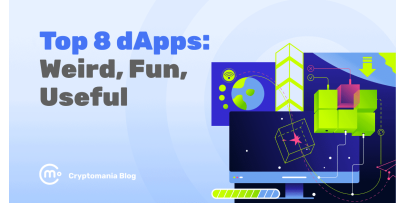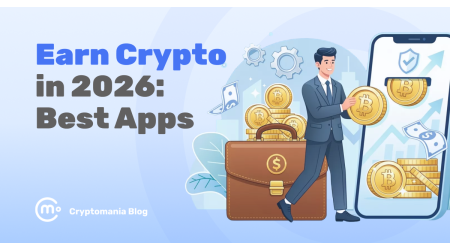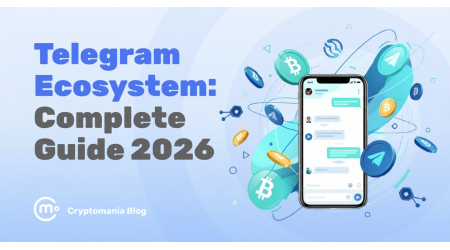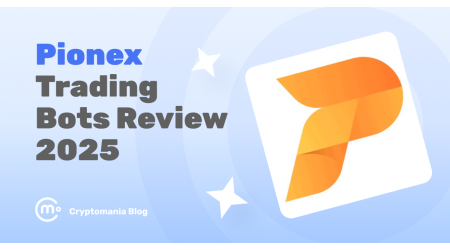

The world of dApps is like a digital flea market. You’ll find serious tools, weird experiments, and a few things that make you say, “Wait… why does this exist?” And that’s exactly why it’s so much fun to explore.
Sure, we all know about the big names — Uniswap, OpenSea, Lens. But beyond the top charts, there’s a growing wave of dApps doing things their own way. Some are clever. Some are chaotic. And some are just plain bizarre in the best possible sense.
In this post, we’re diving into eight of the most peculiar, creative, or straight-up interesting decentralized apps out there right now. But first, let’s take a quick look at what dApps actually are and why they’re worth your time, even if you’re not deep into Web3.
What are dApps and why should you care?
Let’s keep this simple: a dApp is just an app that runs on a blockchain. No central server. No one is pulling the strings. Instead, the code lives out in the open, and no single company gets to decide how it works — or who gets kicked off.
Most dApps rely on smart contracts, which are basically self-executing rules baked into the blockchain. They’re the reason a lending protocol doesn’t need a bank, or a game can run without a publisher.
Why does that matter? Because it changes how power, data, and money move around online. You’re not just a user — you’re part of the system. And when dApps are done right, that can mean more control, more transparency, and less of the usual Web2 nonsense.
Of course, not all dApps are useful. Some are experimental. Some are a little unhinged. But that’s half the charm. The space is still young, and people are still figuring out what’s possible when you mix code with crypto and let it run wild.
Why dApps are cool (beyond the hype)
Let’s be honest: a lot of dApps sound cooler on paper than they are in real life. But when you strip away the buzzwords, the good ones have something real going on.
Some solve problems no one else is touching. Some flip old ideas on their heads. And some are just delightfully weird — built by people who clearly asked, “What if we just… did this?”
What makes dApps stand out isn’t just decentralization. It’s what people do with it. Things like:
-
Giving users ownership instead of just “engagement”
-
Letting communities run the show (for better or worse)
-
Turning internet culture into something programmable
They also open the door to stuff that traditional platforms would never greenlight. You don’t need a corporate sponsor or a million-dollar grant. Just code, a contract, and a reason to launch.
And that’s what makes the space exciting. dApps aren’t stuck playing by the old rules. Sometimes they build new ones. Sometimes they break them entirely. Either way, it keeps things interesting.
1. LOLAI: Laugh to earn
What it does:
LOLAI is a memecoin-powered dApp that rewards you with $LOL tokens for laughing. Yes, you read that right. You laugh, and you earn crypto.
Why it stands out:
In a sea of serious blockchain projects, LOLAI brings a refreshing twist by combining humor, AI, and crypto. Here’s how it works:
-
Laugh detection: You interact with the LOLAI Telegram bot, which uses AI to analyze your laughter. If it’s deemed genuine, you receive $LOL tokens.
-
Community engagement: Beyond just earning, LOLAI fosters a community where humor is the currency. Users share memes, jokes, and participate in laughter challenges.
-
Partnerships and growth: LOLAI isn’t just a gimmick. It’s forming partnerships with other projects, expanding its ecosystem, and continuously engaging its user base.
Vibe: Think of it as the love child of a stand-up comedy club and a crypto mining operation.
Weirdness level: 9/10
2. Cosmose AI: Turning your lock screen into a crypto-powered shopping assistant
What it does:
Cosmose AI transforms your smartphone’s lock screen into an interactive hub that delivers personalized content like news, language lessons, and shopping deals, and rewards you with crypto tokens for engaging with it.
Why it stands out:
This app reimagines the passive act of checking your phone as an opportunity to earn and personalize. Here’s how:
-
KAIKAINOW lock screen: Instead of a static image, your lock screen displays curated content tailored to your interests. Engage with this content, and you earn KAI-CHING tokens, a stablecoin pegged to the US dollar.
-
KAIKAI app integration: Use your earned KAI-CHING tokens in the KAIKAI app to get discounts on products, access exclusive deals, or even make full purchases. It’s a seamless blend of content consumption and shopping.
-
Built on NEAR protocol: Cosmose AI leverages the NEAR blockchain to ensure fast, secure, and low-cost transactions. This integration also emphasizes user data ownership and privacy.
Vibe: It’s like having a personalized shopping assistant that pays you, right on your lock screen.
Weirdness level: 7/10
3. Raydium: Solana’s speedy DEX with a hybrid twist
What it does:
Raydium is a decentralized exchange (DEX) and automated market maker (AMM) built on the Solana blockchain. It enables fast, low-cost token swaps, liquidity provision, and yield farming by integrating with Serum’s central limit order book.
Why it stands out:
Raydium distinguishes itself from traditional AMMs by combining liquidity pools with Serum’s on-chain order book, providing greater capital efficiency and improved trade execution.
-
Hybrid liquidity model: By integrating with Serum’s order book, Raydium allows users to access wider liquidity and better pricing, enhancing the trading experience.
-
Yield farming and staking: Users can stake LP tokens to earn RAY, Raydium’s native token, through farming programs. RAY holders can also stake directly for additional rewards.
-
AcceleRaytor launchpad: Raydium hosts an IDO (Initial DEX Offering) launchpad, helping new projects raise liquidity and gain visibility within the Solana ecosystem.
Vibe: A high-speed, feature-rich DEX that combines the best of AMMs and order books.
Weirdness level: 6/10
4. Pump.fun: Where memes meet markets
What it does:
Pump.fun is a platform on the Solana blockchain that lets anyone create and trade memecoins with just a few clicks. No coding skills required — just a wallet, a meme, and a dream.
Why it stands out:
In the world of crypto, Pump.fun has carved out a niche by making token creation as easy as posting a meme. Here’s how it works:
-
Instant token creation: Users can launch a new token by simply providing a name, symbol, and image. The process is straightforward and accessible to all.
-
Bonding curve pricing: The platform employs a bonding curve model, where token prices increase as demand grows. This incentivizes early adoption and creates a dynamic market environment.
-
Automated liquidity: Once a token reaches a market cap of $69,000, Pump.fun automatically adds liquidity to Raydium, a decentralized exchange on Solana, enhancing the token’s tradability.
-
Fair launch mechanism: All tokens are launched without presales or team allocations, ensuring a level playing field for all participants.
Vibe: It’s like a meme factory with a built-in stock market — chaotic, unpredictable, and oddly captivating.
Weirdness level: 10/10
5. Jupiter: Solana’s DeFi swiss army knife
What it does:
Jupiter is a decentralized exchange aggregator on the Solana blockchain that sources liquidity from various platforms to provide users with the best token swap rates. It also offers advanced trading tools like limit orders and dollar-cost averaging, aiming to deliver a comprehensive DeFi experience.
Why it stands out:
Jupiter distinguishes itself by combining multiple DeFi functionalities into a single platform:
-
Liquidity aggregation: Jupiter pulls liquidity from various DEXs on Solana, ensuring users get optimal swap rates.
-
Advanced trading tools: The platform offers features like limit orders and dollar-cost averaging, providing users with more control over their trades.
-
Perpetual futures: Jupiter has expanded into derivatives trading, allowing users to engage in perpetual futures contracts with up to 5x leverage.
-
Cross-chain bridging: Users can bridge assets between Solana and other blockchains, facilitating broader DeFi interactions.
-
Mobile accessibility: Jupiter offers a mobile app that enables users to manage their DeFi activities on the go.
Vibe: A comprehensive DeFi platform that combines multiple tools and services into one user-friendly interface.
Weirdness level: 5/10
6. Polymarket: Betting on the future, one prediction at a time
What it does:
Polymarket is a decentralized prediction market platform that allows users to speculate on the outcomes of real-world events by buying and selling shares using cryptocurrency.
Why it stands out:
Polymarket transforms the act of forecasting into a tradable asset. Here’s how:
-
Diverse markets: From political elections and economic indicators to pop culture events, Polymarket offers a wide range of topics for users to bet on.
-
Blockchain transparency: Built on the Polygon blockchain, Polymarket ensures that all transactions are transparent, secure, and immutable.
-
Real-time odds: Share prices fluctuate based on market sentiment, providing real-time odds that reflect the collective belief of the community.
-
Regulatory challenges: Despite its innovative approach, Polymarket has faced regulatory scrutiny, including a $1.4 million fine from the Commodity Futures Trading Commission (CFTC) for operating an unregistered derivatives trading platform.
Vibe: It’s like the stock market for opinions, where your insights can earn you crypto.
Weirdness level: 8/10
7. KGeN: Where your gaming skills become your resume
What it does:
KGeN is a decentralized platform that transforms your gaming achievements into a verifiable digital identity. By tracking in-game actions, social interactions, and contributions, it builds a comprehensive gamer profile that you own and control.
Why it stands out:
KGeN introduces the Proof of Gamer (PoG) engine, which records your gaming activities like victories, purchases, and community involvement on the blockchain. This data forms a unique gamer identity that can be used across games and platforms. Key features include:
-
Reputation engine: Your gaming history is quantified into a reputation score, reflecting your skills and engagement.
-
Reward system: Participate in quests and tournaments to earn rewards in the form of rKGEN tokens, which can be staked or redeemed.
-
Community building: Form clans and collaborate with other gamers to enhance your influence and unlock additional opportunities.
-
Data ownership: Unlike traditional gaming platforms, KGeN ensures that you retain ownership of your gaming data, allowing you to monetize and transfer it as you see fit.
Vibe: It’s like LinkedIn for gamers, but with actual rewards and control over your data.
Weirdness level: 9/10
8. Zora: Where every post becomes a tradable token
What it does:
Zora is an on-chain social network that transforms every piece of content you post — be it art, text, or memes — into its own tradable token. It’s like turning your social media posts into their own mini cryptocurrencies.
Why it stands out:
Zora isn’t just another NFT platform; it’s redefining how creators and audiences interact:
-
Content as coins: Every post on Zora becomes a unique token with its own liquidity pool, allowing users to buy, sell, and trade content directly.
-
Creator earnings: Creators earn a share of trading fees whenever their content is traded, providing ongoing revenue beyond the initial sale.
-
Referral rewards: Users who bring others to the platform or promote content can earn a portion of the trading fees, incentivizing community growth.
-
Built on Base: Zora operates on the Base Layer 2 network, ensuring faster transactions and lower fees compared to the Ethereum mainnet.
Vibe: It’s like if your tweets had their own stock tickers and you got paid every time someone traded them.
Weirdness level: 9/10
Wrapping up
As you can see, the dApp world isn’t just about trading tokens and chasing yield. It’s also a playground for creativity, chaos, and occasionally genius-level weirdness. Whether it’s laughing for crypto, launching a memecoin in 30 seconds, or tokenizing your latest post, these projects show just how far decentralization can stretch.
And this is just the start. The dApps we covered today are a glimpse into what happens when tech, community, and a little madness collide.
Curious to dive deeper into NFT-focused dApps? We’ve got a whole post dedicated to the best NFT platforms worth checking out. Go take a look, you might just find your next favorite rabbit hole.





